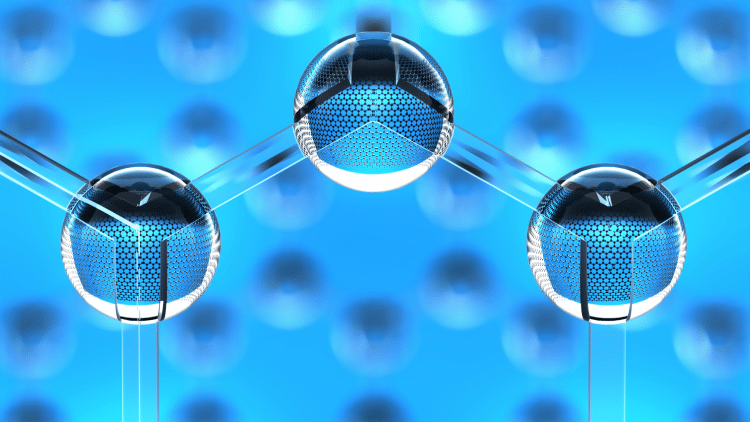Nanoemulsions may be the future of formulating cannabis edibles. The science behind nanoemulsion is rapidly advancing, and studies [1] are finding nanoemulsion to increase the bioavailability and bioactivity of vitamins, nutraceuticals, lipids, pharmaceuticals, and cannabinoids. For these reasons, using the process of nanoemulsion as a delivery mechanism for cannabinoids like tetrahydrocannabinol (THC), cannabidiol (CBD), or cannabigerol (CBG) is continuing to become more popular. Nanoemulsified cannabinoids are already being used to create all sorts of cannabis-infused foods and beverages.
The process of nano-emulsification is fascinating, and the science of nanoemulsion-based technology is quickly advancing. The two most common and traditional nanoemulsions are oil-in-water (O/W) and water-in-oil (W/O). [1] Other combinations like W/O/W and O/W/O can be made, but O/W is used the most.
To make these nanoemulsions, there are low and high energy methods. Low-energy methods rely on the spontaneous formation of tiny oil droplets after being temperature treated. High-energy methods rely on the application of great mechanical force to disperse oil droplets within the water alongside a surfactant.
Research to define the best method is ongoing. However, an increase in demand from consumers for more natural food ingredients has sparked new research looking into ways to make nanoemulsions using ingredients from plant-based sources, and high-energy methods seem to be more suitable for plant-based emulsifiers. Nanoemulsions are already being used in various applications, including antimicrobials, vitamins, nutraceuticals, cannabinoids, and foods, but the science continues to advance.
There are six newly designed nanoemulsion-based technologies. First is lipid phase solidification, which involves a crystallization process during the formulation of the nanoemulsion that results in longer shelf life and a gradual release of the nanoparticles after ingestion. Next is interfacial engineering, where lipid droplets get coated with layers of edible biopolymers that make them more stable and functional. Another new method is lipid droplet clustering, where the position of the lipid droplets is controlled in clusters to increase viscosity, making it useful for creams.
Then there’s particle coating, an approach where the lipid droplets are used to coat large particles, like microgels. This can cause the coated microgel to function similarly to a larger fat droplet, reducing overall fat content, and could be used to make foods with reduced calories.
Lastly, we have microgel encapsulation. In this process, lipid droplets are embedded inside larger particles to form small lipid droplets trapped inside the microgel particles. This process can be taken a step further (the sixth method) by encapsulating lipid droplets within microgel-in-microgel systems. These microgel encapsulation methods allow for a wide variety of functions, including increased shelf life, controlled release rate after ingestion, slower digestion of lipids, and more. [1] These are only a few examples of the advances in nanoemulsion-based technology, and science will continue to move forward as more advantages of nanoemulsions are discovered.
Reference
- McClements DJ. Advances in edible nanoemulsions: Digestion, bioavailability, and potential toxicity. Prog Lipid Res. 2021;81:101081. doi: https://doi.org/10.1016/j.plipres.2020.101081. [Impact Factor: 15.083; Times Cited: n/a]











